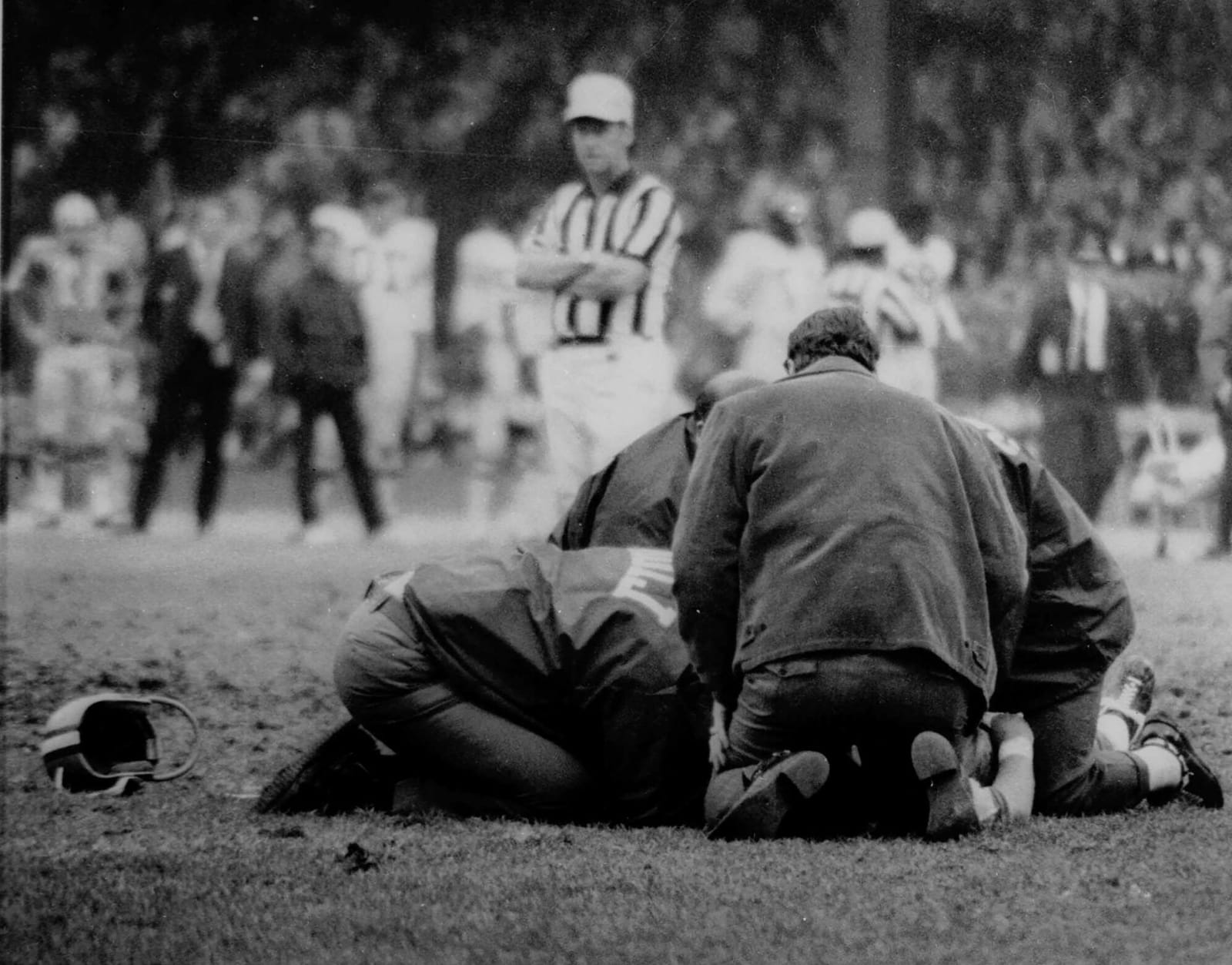Buffalo Bills player Damar Hamlin, who recently returned to training following his recovery from cardiac arrest has shed light on the inherent risks that athletes face in competitive sports. Damar Hamlin’s cardiac arrest has also reminded us of the tragic cardiac arrest tale of Detroit Chuck Hughes.
These contrasting narratives shed light on the unpredictable nature of cardiac events in sports.
Damar Hamlin Returns to Training Following Cardiac Arrest Recovery
The 24-year-old safety had collapsed on the field after a tackle during a Monday night game against the Bengals, and his subsequent hospitalization in critical condition sent shockwaves through the sports community.
Despite the initial severity of the safety condition, his remarkable recovery has been an inspiration to many. General Manager Brandon Beane expressed his pride in Hamlin’s progress, highlighting the significant milestones he has already achieved. The fact that the safety has gone from fighting for his life in January to considering a return to professional football is truly remarkable.

Beane outlined the gradual path back to the football field for Hamlin, with live contact during training camp being the next milestone they hope to accomplish.
“We’ll continue to ramp him up with helmets on. But that’ll be probably the next big hurdle for him, tackling,” Beane said.
While there may still be challenges ahead, the fact that the safety has made such progress in a relatively short time is a testament to his resilience and the support he has received.
The Unfortunate End of Chuck Hughes
As the story of Damar Hamlin’s cardiac arrest and subsequent recovery unfolds, it inevitably brings to mind the tragic tale of Detroit Lions wide receiver Chuck Hughes. In a chilling parallel, Hughes also experienced a heart-related incident during a game, but with a profoundly different outcome.
During a game against the Chicago Bears, Hughes collapsed while jogging back to the huddle. In front of over 50,000 spectators, he suffered a heart attack and never regained consciousness. Unlike Hamlin, Hughes had not been hit before his collapse. Witnesses reported that Hughes clutched his chest before falling, and medical staff discovered that he had stopped breathing, had no heartbeat, and appeared extremely pale.

Subsequent autopsy results revealed that the 28-year-old Hughes had undiagnosed arteriosclerotic coronary heart disease, a condition characterized by the hardening of arteries. A clot obstructing a major artery of the heart was also found. It was discovered that both of Hughes’ parents had also succumbed to heart disease, and he had previously experienced sharp chest and stomach pains.
The contrasting narratives of Hamlin and Chuck Hughes serve as a stark reminder of the unpredictable nature of cardiac events in sports. While Damar Hamlin’s cardiac arrest was caused by commotio cordis and he was fortunate enough to receive timely medical intervention and make a successful recovery, Hughes’ undiagnosed heart condition ultimately claimed his life on the field.
These tragic stories underscore the importance of thorough medical evaluations, regular check-ups, and open communication between athletes and medical professionals. Detecting underlying heart conditions and managing them appropriately can potentially prevent similar catastrophic incidents in the future.








